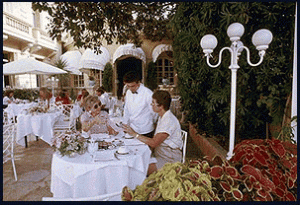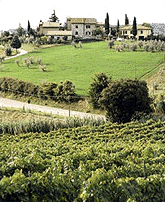
Tuscany, a region in west-central Italy, derives its name from the Etruscans, a people who entered the area about 3,000 years ago. A region of green, rolling hills, Tuscany is famous for its olives and wines, as well as its culture: Florence, Tuscany’s principal city, is considered the birthplace of the Renaissance. Lucca, Pisa and Siena are also well-known Tuscan cities.
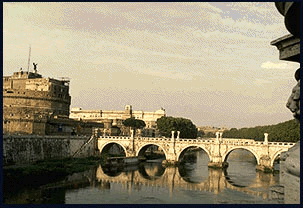
The Castel Sant’Angelo, built in the 2nd century A.D., was originally a burial-place for Roman emperors; it was made into a fortress in the 4th century. Its name comes from a legend, according to which Pope Gregory the Great was leading a procession in 590 to free the city from an outbreak of plague; he looked up, and saw an angel above the fortress, sheathing a sword. The plague stopped. Today, there is a statue of an angel atop the fortress to commemorate the event.
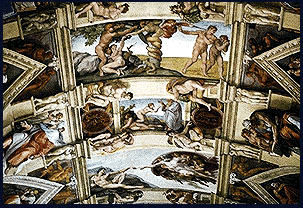
The Sistine Chapel in the Vatican was built for Pope Sixtus IV (hence its name) between 1475 and 1483. Michelangelo was commissioned to paint the ceiling, a task that took four years, from 1508 to 1512. The scenes pictured above are from the Bible: the Creation of Adam, the Creation of Eve, and the Temptation and Expulsion from Paradise (reading from the bottom up).
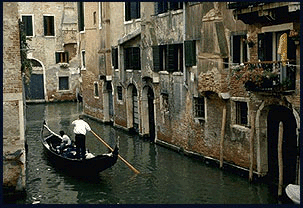
The city of Venice was built on a group of islands in a shallow lagoon in northeastern Italy; the principal “roads” in Venice aren’t really streets at all, but canals. The traditional means of transport along the canals is the gondola, a flat-bottomed boat developed in Venice and available for hire, like taxis in other cities.
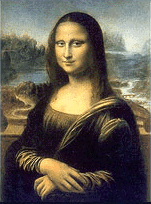
Arguably the most famous painting in the world, Leonardo da Vinci’s “Mona Lisa” (la Gioconda in Italian) is the portrait of Lisa del Giocondo, the wife of a Florentine businessman. Ironically, this best-known masterpiece of the Italian Renaissance has spent most of its life in France (da Vinci died there, in the service of King Francis I); today it hangs in the Louvre.
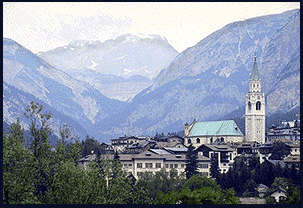
The Alps form Italy’s northern border with France, Switzerland and Austria. The mountainous regions of Valle d’Aosta, Piedmont, Lombardy and Trentino-Adige are popular vacation destinations for Italians and foreign tourists alike, offering opportunities for skiing, hiking and cycling.

Venice’s Basilica di San Marco is one of the most beautiful churches in the world. The present basilica dates from A.D. 1071, and was built to house the body of St. Mark the Evangelist, whose body was brought to Venice from Alexandria (Egypt) in the 9th century.
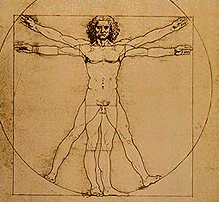
Leonardo da Vinci (1452-1519) was a painter, sculptor and scientist of extraordinary genius who exemplified the creativity and intellectual curiosity of the Italian Renaissance. Many of his sketches reveal his interest in applying scientific observation and analysis to his art, as in this study of the proportions of the human body.
One of the many great joys of visiting Italy is the food: over the centuries, the Italians have managed to raise the mundane act of eating to something approaching art. Thanks to Italy’s Mediterranean climate, dining outdoors (al fresco) is an enchanting experience that can be repeated frequently.

